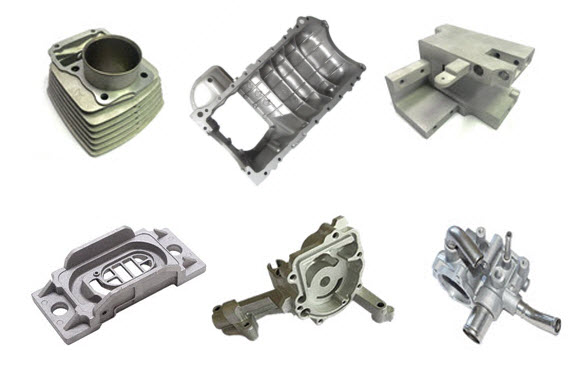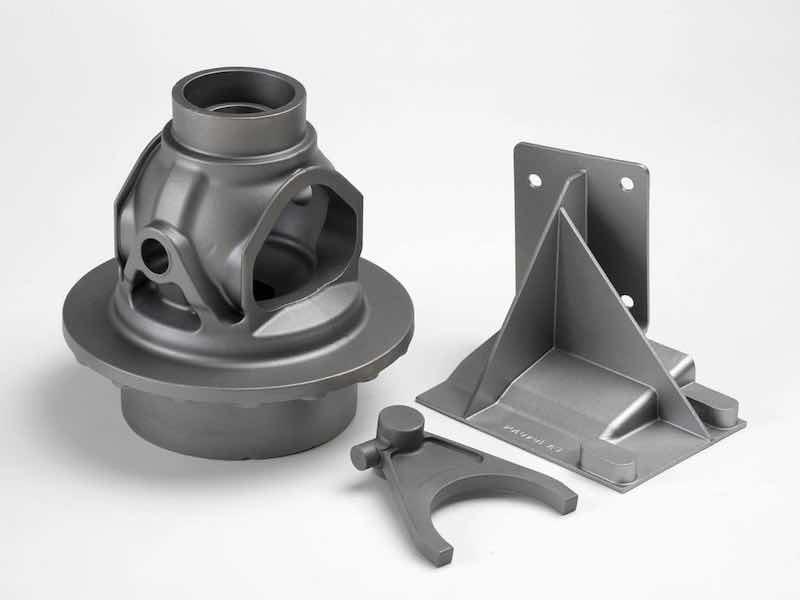Checking Out the Diverse Applications and Advantages of Aluminum Foundry in Modern Manufacturing
Aluminum factories are essential in today's manufacturing landscape. They create parts that offer numerous sectors, including vehicle and aerospace. The lightweight nature of Aluminum combined with its longevity makes it a favored choice. Additionally, cutting-edge casting strategies boost production efficiency. The ramifications of these advancements on sustainability and future patterns require more expedition. What chances and challenges exist ahead for Aluminum factories in this evolving market?
The Role of Aluminum Foundries in Modern Production
Aluminum factories play an important role in modern-day manufacturing, contributing considerably to different industries such as automobile, aerospace, and construction. These facilities focus on the melting and spreading of light weight aluminum, a lightweight, long lasting material recognized for its exceptional rust resistance and thermal conductivity. The foundries make use of innovative strategies, consisting of sand casting, die spreading, and investment casting, to create top quality elements tailored to certain applications.
Secret Applications of Aluminum Components Across Industries
Throughout various markets, Aluminum elements are indispensable to enhancing efficiency and performance. In the vehicle industry, Aluminum is commonly utilized for engine blocks, transmission cases, and structural parts, contributing to lighter cars that enhance gas efficiency. The aerospace sector relies upon Aluminum for aircraft structures, components, and wings, benefiting from its high strength-to-weight proportion to boost trip efficiency.
In electronic devices, Aluminum is used in warmth sinks and housings, offering efficient thermal monitoring while maintaining lightweight features (Aluminum Castings). The building market gain from Aluminum in home window structures, roof, and cladding, where sturdiness and appearances are necessary
Furthermore, product packaging applications utilize Aluminum for containers and foils, giving an effective barrier against dampness and light. In each of these markets, Aluminum parts not just support functional demands but also promote sustainability via recyclability, making them a recommended option in modern-day production practices.

Advantages of Aluminum Contrasted to Various Other Materials
The adaptability of Aluminum makes it a superior selection over numerous various other products in producing applications. Among its primary benefits is its light-weight nature, which adds to lowered energy intake and improved performance in transport and building and construction markets. Additionally, Aluminum exhibits excellent rust resistance, boosting the durability of items without the requirement for substantial maintenance.
Light weight aluminum's malleability allows for intricate styles and forms, providing to varied industry demands, from automobile to aerospace. Its electric and thermal conductivity also surpasses that of several choices, making it perfect for applications needing warmth dissipation or electric transmission.
Light weight aluminum is extremely recyclable, promoting sustainability in making processes. Compared to steel, it uses a favorable strength-to-weight proportion, enabling robust yet light-weight structures. Jointly, these characteristics position Aluminum as a recommended material, enabling producers to attain both performance and sustainability in their products.
Cutting-edge Casting Methods in Aluminum Foundries
In the domain name of Aluminum manufacturing, cutting-edge casting techniques are reinventing the production procedure and improving the material's applications. Among these techniques, die spreading sticks out for its capability to create complex forms with high precision and minimal waste. This method enables rapid mass production, making it excellent for sectors such as vehicle and electronic devices. Investment casting has actually obtained appeal due to its capability to produce detailed designs with superb surface area coating, fitting both small and large elements.
An additional notable method is sand casting, which supplies convenience and cost-effectiveness for producing majorities. Current innovations in 3D printing innovations are additionally being incorporated right into Aluminum spreading, making it possible for fast prototyping and customization. These advancements not only improve effectiveness however additionally increase the possibilities for Aluminum applications throughout different industries, eventually driving the advancement of contemporary production techniques.
Sustainability Campaigns in Aluminum Production
Sustainability initiatives in Aluminum manufacturing concentrate on enhancing recycling processes, which considerably reduce power intake and emissions. Implementing power effectiveness methods further adds to a reduced carbon footprint, making Aluminum a much more ecologically friendly material. These efforts show the sector's commitment to lasting manufacturing and source conservation.
Reusing Aluminum Advantages
While Aluminum manufacturing is resource-intensive, recycling Aluminum presents considerable benefits that line up with sustainability efforts in production. Reusing Aluminum requires just 5% of the power required for primary production, considerably reducing greenhouse gas emissions. This power effectiveness not only preserves natural resources yet additionally lessens the ecological influence connected with mining and refining raw products. In addition, reusing Aluminum supports a circular economy by reintroducing products back into the supply chain, thereby lessening waste and advertising resource conservation. The process likewise generates financial benefits through job production in recycling centers and lowers dependence on foreign Aluminum resources. Overall, recycling Aluminum is an important element of lasting methods that contribute to an extra environmentally accountable manufacturing landscape.
Power Effectiveness Practices
The Aluminum manufacturing market is progressively adopting energy efficiency techniques to enhance sustainability alongside recycling initiatives. These efforts concentrate on maximizing power intake throughout the production procedure. Manufacturers are applying innovative innovations such as high-efficiency heating systems and wise grid systems, which enable for better energy monitoring and lowered waste. In addition, the combination of sustainable energy resources, like solar and wind power, is becoming a lot more common, in addition reducing dependence on nonrenewable fuel sources. Continual surveillance and evaluation of power use help with the recognition of ineffectiveness and chances for improvement. Additionally, workforce training on energy-saving methods guarantees that staff members actively add to power conservation efforts, developing a culture company website of sustainability within the organization. These techniques collectively support an even more sustainable Aluminum manufacturing landscape.
Minimized Carbon Footprint
To attain a decreased carbon footprint, the Aluminum production sector is significantly welcoming cutting-edge sustainability campaigns. Companies are buying advanced technologies that minimize power usage and discharges during the manufacturing procedure. The integration of renewable power sources, such as solar and wind power, plays a vital function in decreasing dependence on fossil gas. Furthermore, the recycling of Aluminum scrap considerably lowers the carbon impact, as recycled Aluminum requires just a fraction of the energy required for main production. Joint initiatives amongst suppliers, federal governments, and ecological organizations even more drive progression in sustainability. By taking on these measures, the Aluminum sector not only addresses environmental issues but also boosts its competitive edge in a market significantly focused on eco-friendly methods.
Future Trends in Aluminum Foundry Technology
Advancement goes to the forefront of Aluminum Foundry technology, reshaping and driving substantial improvements market practices. Emerging trends include the integration of expert system and artificial intelligence, improving procedure optimization and high quality control. These modern technologies assist in predictive maintenance, minimizing downtime and boosting functional effectiveness. In addition, making use of 3D printing and additive manufacturing is gaining traction, allowing for intricate geometries and lowered product waste.
Sustainability stays a crucial focus, with innovations in reusing strategies boosting the circular economic situation of aluminum. Companies are significantly embracing energy-efficient methods, such as low-pressure die casting, which minimize power consumption and emissions. Furthermore, electronic doubles are becoming commonplace, making it possible for real-time tracking and simulation of Foundry processes.

Regularly Asked Questions
What Precaution Remain In Area at Aluminum Foundries?
Aluminum foundries carry out numerous safety procedures, consisting of safety gear, appropriate air flow, fire avoidance systems, regular safety training, and emergency situation methods to mitigate risks connected with heats, liquified steel handling, and potential exposure to dangerous products.
Just How Do Aluminum Foundries Make Certain Top Quality Control Throughout Manufacturing?
Aluminum shops carry out rigid top quality control procedures such as routine assessments, product testing, and adherence to industry standards. These methods assure uniformity in products while reducing problems, ultimately enhancing the reliability and efficiency of Aluminum elements.
What Are the Typical Difficulties Faced by Aluminum Foundries?
Aluminum foundries commonly encounter difficulties such as preserving consistent quality, managing manufacturing expenses, steering regulatory conformity, resolving tools maintenance issues, and adjusting to fluctuating market needs, all of which can affect operational performance and earnings. - Aluminum Foundry
Just how Does the Aluminum Recycling Refine Work in Foundries?
The Aluminum reusing process in shops involves accumulating scrap light weight aluminum, melting it in heaters, removing contaminations, and casting the molten steel into wanted shapes, therefore reintroducing it right into the manufacturing cycle effectively and sustainably.
What Are the Task Opportunities Available in Aluminum Foundries?
Job possibilities in Aluminum foundries consist of roles such as Foundry drivers, quality assurance examiners, upkeep technicians, engineers, and manufacturing supervisors. These placements call for numerous skill levels, using possible for occupation development within the manufacturing field.
Sustainability efforts in Aluminum manufacturing pop over here emphasis on improving reusing procedures, which significantly reduce energy usage and exhausts. While Aluminum production is resource-intensive, recycling Aluminum provides substantial benefits that straighten with sustainability efforts in manufacturing. Recycling Aluminum calls for only 5% of the energy required for primary manufacturing, substantially reducing greenhouse gas emissions. The Aluminum view it production field is progressively taking on power effectiveness techniques to improve sustainability together with reusing initiatives. Additionally, the recycling of Aluminum scrap substantially reduces the carbon impact, as recycled Aluminum calls for only a fraction of the energy needed for main production.